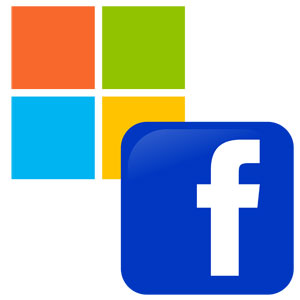- 5080 views
- 0 comments
Microsoft-Facebook alliance bets on submarine fibre-optic cables to link data networks in America and Europe
MAREA, a joint Microsoft-Facebook high-capacity (up to 160 Terabits per second) submarine fibre-optic cable project, will substantially increase the quality of its data services such as Bing, Office 365, Skype, Xbox Live and Microsoft Azure. The alliance is targeting October 2017.

In order to serve our customers and provide the reliable, low-latency connectivity they deserve, we continue to invest in new and innovative ways to continually improve both the Microsoft Cloud and the global Internet infrastructure," said Frank Rey, head of Microsoft Corp's global awards group, adding: "This marks an important new step in building the next-generation Internet infrastructure.
Virginia BeachThe cable will link Virginia Beach (USA) to Sopelana (Basque Country-SPAIN) via 6,600 kilometres of high-performance submarine fibre-optic cable. The site chosen meets the mooring and strategic location requirements set out in a technical study carried out by Microsoft-Facebook. The company in charge of its management will be Telxius Telecom, Telefónica's new infrastructure subsidiary. The aim is to link North America with southern Europe by means of a reliable connection; the route chosen will be an unprecedented challenge for the companies involved. Once the connection has been made, new routes including Africa, the Middle East and even Asia can be planned.
Rafael Arranz, head of operations at Telxius, argues: "We will be able to transfer much more information and users will benefit as they will have much better connectivity than they have traditionally had for downloading content and applications in the use of new technologies". Telxius also retains the right to acquire a stake in the infrastructure.
Such an investment requires a long operating life. Marea is designed to be interoperable with existing and future network equipment. This is of particular benefit to the customer, substantially extending the available bandwidth and allowing for a gradual upgrade of equipment. All of this supports the evolution to innovative fibre optic technologies. "We are continuously evaluating new technologies and systems in order to offer the highest possible connectivity. By creating a vendor-independent design with Telxius and Microsoft, we can choose the most appropriate hardware and software and ultimately increase the pace of innovation," explained Najam Ahmad, Facebook's vice president of network engineering. "We want to do more projects with this philosophy: move faster with more collaboration. We believe this is how most submarine cables will be built in the future.
Technical challenges:
As can be expected for a project of this scale, the submarine cable laying will be a major technological challenge. It will be a long and complicated task to be carried out by specialised teams composed of technicians, engineers and specialists assisted by a fleet of ships carrying crew and material.
The cable will be composed (see image) of 8 pairs of fibre optic (8) coated with vaseline (7), contained in a copper or aluminium tube of circular section (6), in turn protected with polycarbonate tubing (5) over which runs a waterproof aluminium barrier (4) with braided steel mesh reinforcement (3) and mylar mesh (2), the outer sheath will be made of polyethylene (1) ensuring the resistance and impermeability of the whole. According to technical specifications, its duration is 25 years in an underwater environment.


Comments (0)